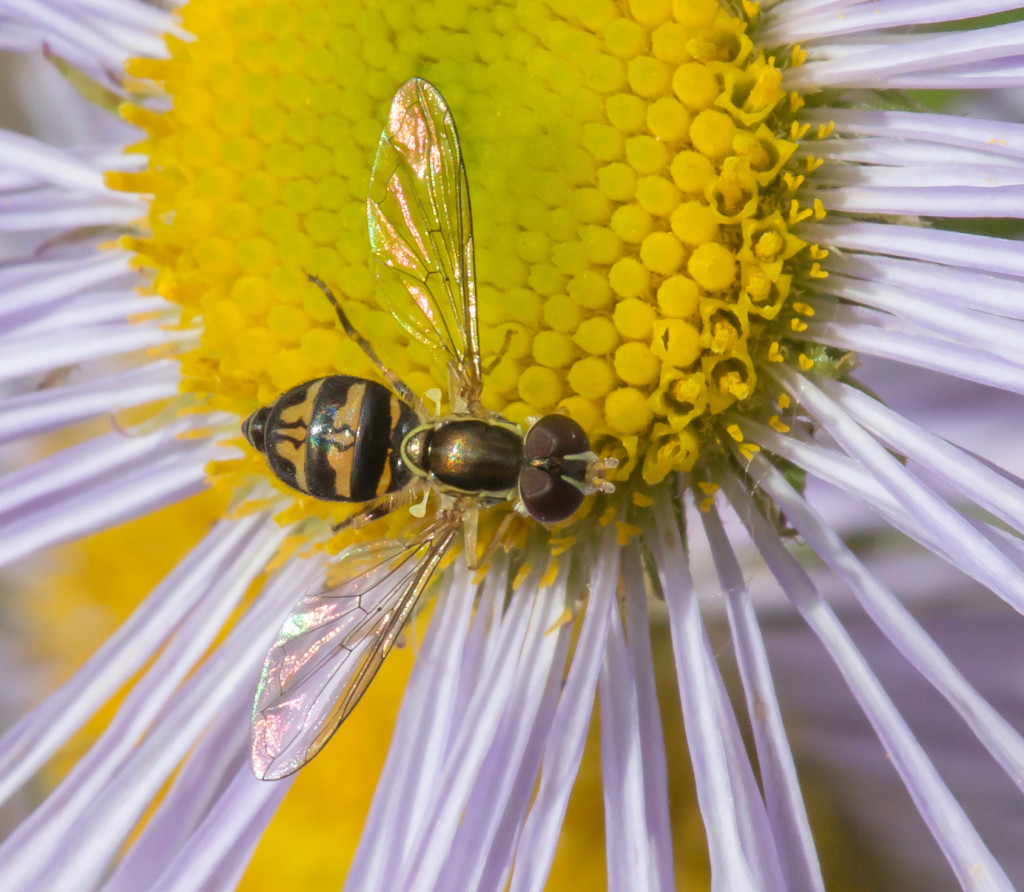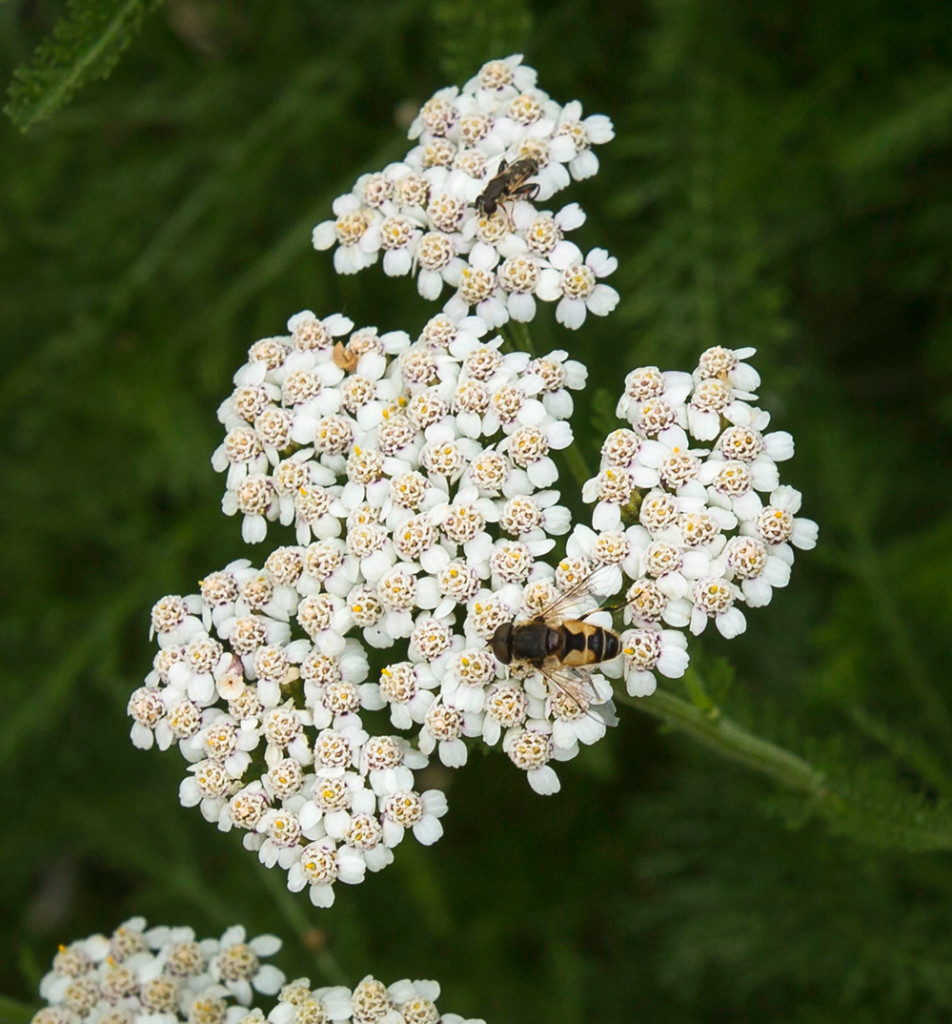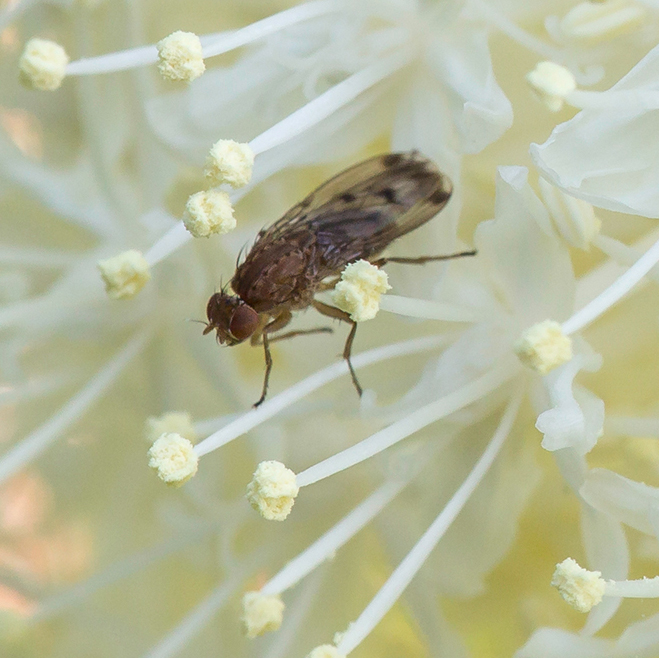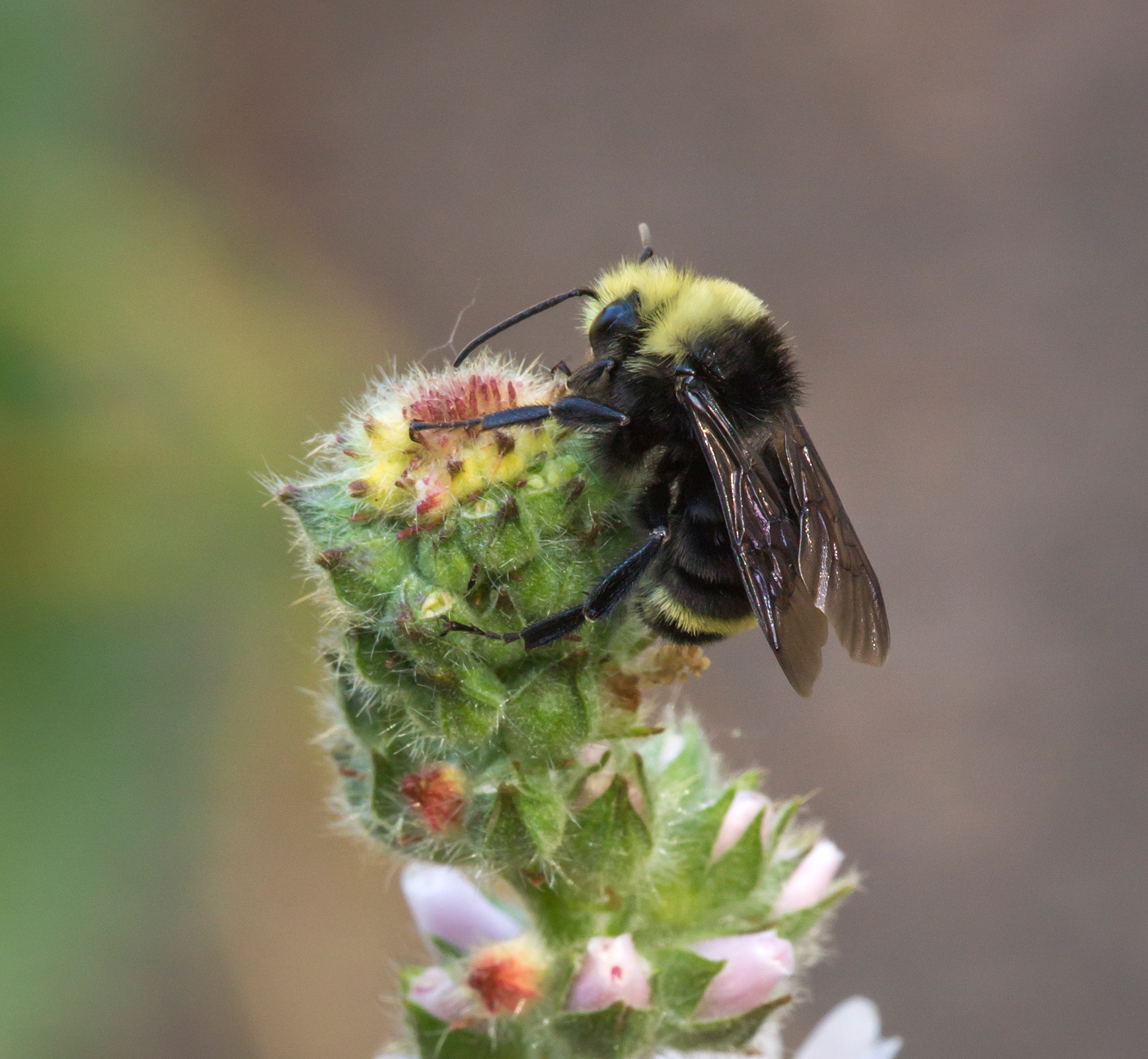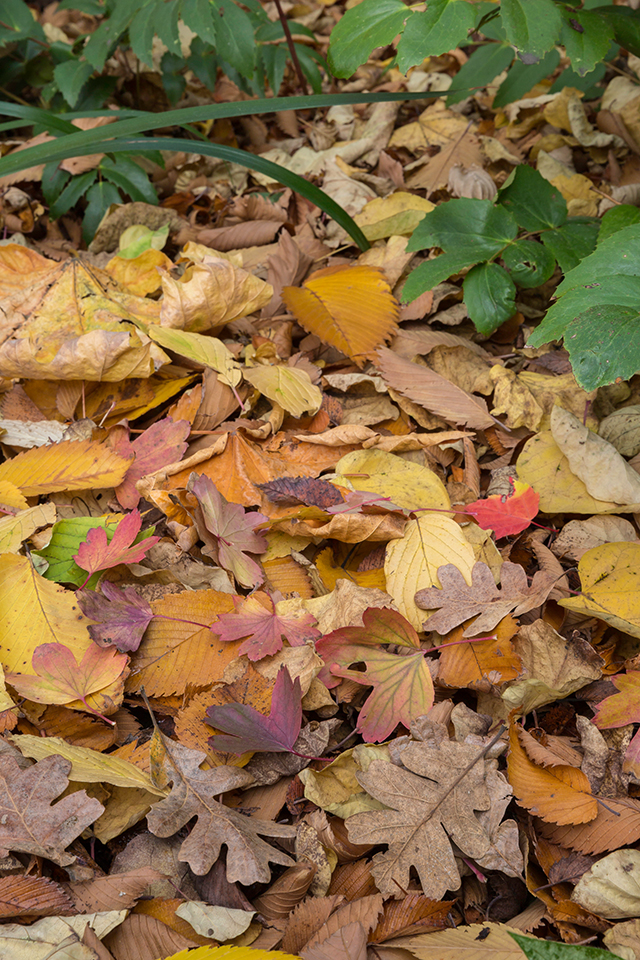
The last of the warm, dry fall days are upon us and it seems like a great time to be puttering around the garden. But this time of year is actually not a good time to be “cleaning up”—that is, removing fallen leaves and woody debris from bare soil, pruning standing plants, and making your yard look somewhat like a victim of a gardening magazine makeover. Leaves and other plant material that fall to earth are part of nature’s systems that nurture and shelter wildlife and enrich and protect the soil. Healthy soil has an uncanny ability to not only keep plants thriving, but also store carbon.
Bedtime for bugs
Leaving fallen leaves on soil is one of the best (and easiest!) things you can do to support wild ones such as birds, amphibians, and small mammals in your garden, as well as myriad invertebrates, including bees, butterflies, spiders, beetles, and worms. Leaves and other plant matter are meant to fall to the soil, to provide food for unfathomable numbers of microbes as well as the macroscopic consumers and recyclers that feed on decaying plant matter. Further up the food chain, many creatures—ground-feeding birds, for example—rely on nature’s soil cover to provide for those they need to eat, which they find under leaves and downed wood (fallen twigs and branches, etc.).
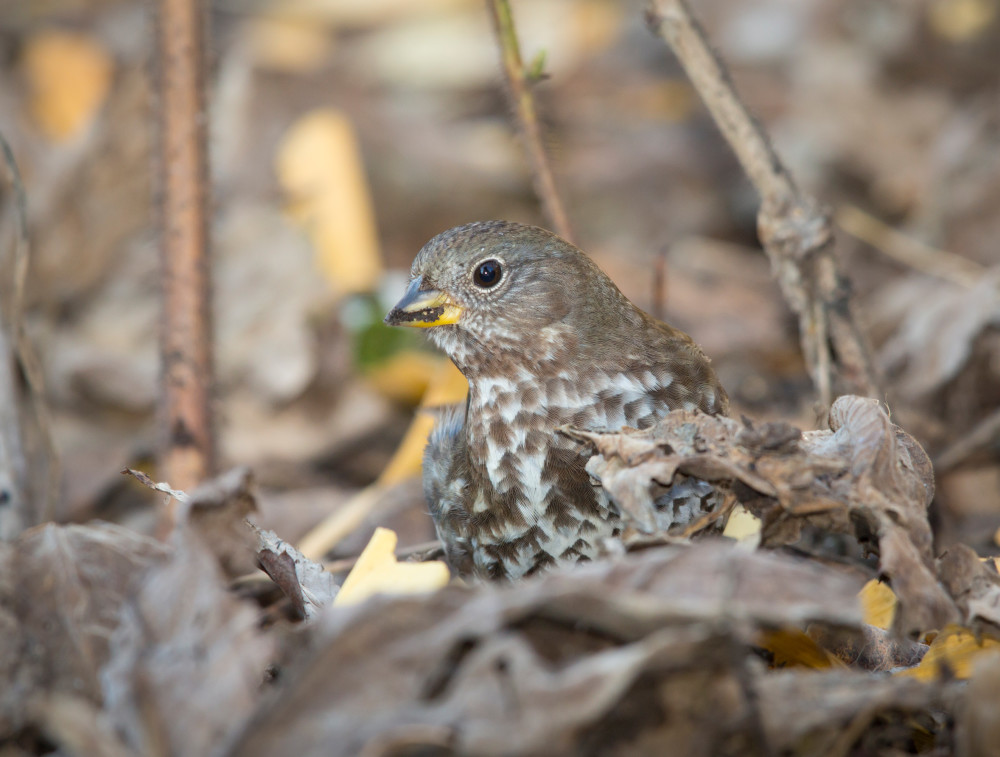
A fox sparrow finds dinner under leafy cover.
If we zoom in a bit, we might see small organisms, such as syrphid fly larvae depending on plant debris for a sort of blanket to help them through the cold, wet winter. As things warm up in springtime, some kinds of syrphid fly larvae will consume enormous quantities of aphids and leafhoppers that can harm our edible plants. Adult syrphid files (also called “hover flies” or “flower flies”) are important pollinators: spring through late summer I see quite a variety of them in my garden, probably because I prescribe a healthy dose of fallen leaves on the ground in autumn.
A leafy layer also encourages other pollinators to make it through the winter. For example, as pollination season shuts down and bumble bee workers (females) and males perish, newly crowned bumble bee queens (technically “gyne,” an impregnated queen who has not yet founded a nest but will establish a whole new generation of bumble bees next year) live on. Queens find refuge by digging a shallow tunnel in loose soil—known as a hibernaculum—that’s often tucked under leaf litter. And, many species of lepidoptera (butterflies and moths) overwinter under fallen leaves as eggs, larvae, pupae, or adults. If we disturb their slumber by blowing or raking them away, they and the ecosystem will suffer. Essentially, they and their habitat need to simply be left alone if we want them to grace our gardens and wilder spaces next year.

Western tiger swallowtail pupa, clinging to wood, waits out the winter and spring.
Don’t cut back
Fall pruning isn’t a good idea because it may stimulate a plant to put on new growth, which could be sensitive to the lower winter temperatures soon to come. Another important reason not to prune in autumn is that branches and bark — particularly of native plant species — may support butterfly and moth pupae, (aka chrysalis). Swallowtail butterfly pupae pass the winter attached by thin threads to woody material — disguised as dried up leaves or old bits of wood to fool predators — until the warmer temperatures of spring stimulate their metamorphosis into adults. While some non-native fruit trees do need winter pruning and it’s beneficial to remove diseased and dying annual vegetable garden plants to prevent the spread of disease to next year’s kitchen garden, in all other parts of the yard, if you must prune woody plants, approach it the following spring, being sure not to disturb any nesting birds.

Erigeron speciosus (showy fleabane) seed head. When viewed closely, seed heads can be fascinating in their complexity.
Moreover, although they may look dead, the seed heads of PNW native perennials such as fleabane, fescue, goatsbeard, and lupine provide food for seed-eating birds, while their stems or stalks—pithy or hollow—provide shelter and/or cavity nests for beneficial insects like the wild bees that nest in small tunnels. If you must cut them back to the plants’ bases, do it as late as possible in springtime and, instead of throwing them away, place the cut stems in an out of the way place so that anyone using them to get through the winter won’t be discards and so that they may be used by the new year’s cavity nesters.
And, aesthetically speaking, allowing fading plants to stand during winter provides structure and form. On cold, frosty mornings they can be magically transformed into silvery jewels.
Protect and nourish the soil
Down at soil level, besides providing a haven for overwintering organisms, fallen leaves and woody debris protect the soil, which can degrade and erode fairly quickly from excessive rain, sunlight, and wind. In nature, soil is protected and mimicking the way it does that will help your soil stay healthy. And over many years, leaves decompose into layers of organic matter that feed plants naturally and gently, improve the condition of soil, and store carbon with the help of mycorrhizal fungi. The other day I relocated a plant to a spot in my front yard that’s been collectively accumulating a couple dozen inches of leaves over the past 15 years. To my delight I found the result of their decomposition: A couple of inches of soft, dark, rich organic matter that wasn’t there a decade ago.
Even when we’re being careful, though, it’s easy to cause disturbance. A few autumns ago, as I moved a small amount of leaf litter to another area, I inadvertently uncovered an overwintering queen bumble bee. I felt terrible as I watched her stumble around, obviously weak and awoken from a sound sleep. Luckily it was a warm, dry day and eventually she flew off into the sunshine. But clearly the awakening had been a rude one, because a short while later she returned and burrowed into some loose soil covered by leaves, just a few feet from where she had been. After she was safely underground, I gingerly placed a couple of particularly interesting rocks several inches from her tunnel’s entrance, as well as some oak leaves on top of the soil to remind myself of where she slept.
Moral of the story: The more we clean up and work towards a neat and tidy garden, the worse off beneficial birds, bugs, and countless other life forms will be. If you tend to be a neatnik (like I am), try to catch yourself every time you start moving into manicure-mode and getting overly tidy—especially in the wilder parts of the yard where wildlife may visit or set up house. It just doesn’t make sense to risk losing them for the sake of neatness or to maintain a certain ‘look.’ If you have piles of leaves that have been raked off hardscape or lawn, here are additional ways to use them in your garden.



